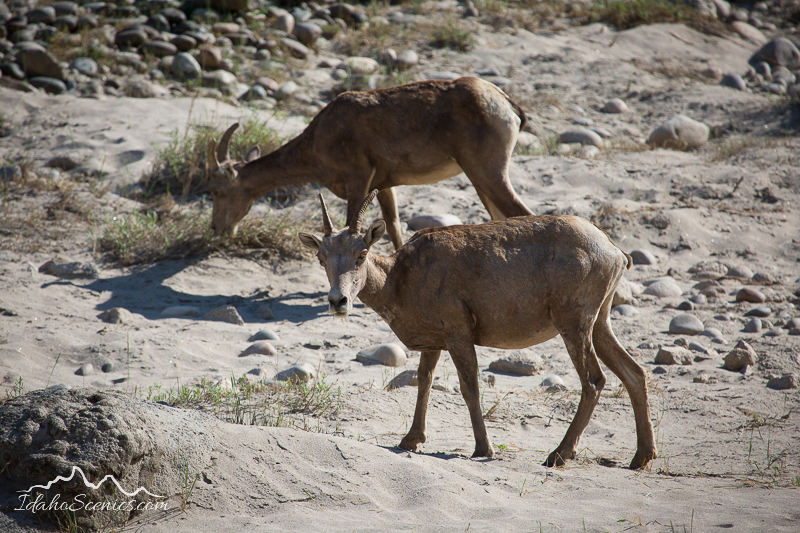Fish and Wildlife
Idaho is blessed with a diversity of fish and wildlife species, but we cannot take them for granted. Wolverine and sage grouse are declining and should be added to the endangered species list. Efforts to recover grizzly bears and bull trout need to continue, and the four lower Snake River dams must be breached or Idaho will lose its wild salmon and steelhead forever.
Salmon and Steelhead
Wild salmon and steelhead are integral to Idaho’s identity, but they are in peril. For nearly thirty years, all of Idaho’s wild salmon and steelhead have been placed on the endangered species list. Born in the headwaters of the Snake, Salmon, and Clearwater Rivers, these iconic fish migrate to the ocean and then return to their native waters where they spawn and die — and the cycle begins anew. Idaho holds the best coldwater habitat for salmon and steelhead anywhere in the lower 48 states, but the journey to the ocean and back has become a gauntlet. Eight massive dams stand in the way, killing more than half the juvenile fish that migrate downstream each year. ICL is working to restore ecologically significant, harvestable populations of wild salmon and steelhead to Idaho by breaching half of these dams as part of a broader effort around salmon and steelhead recovery.
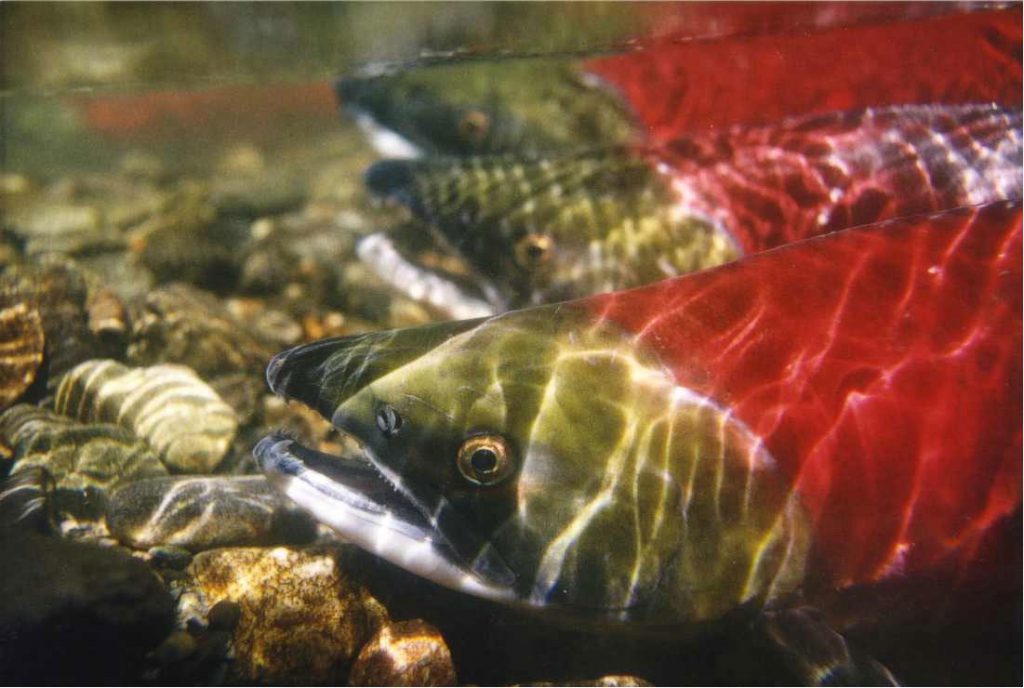
Bears
Black bears are found through all of the mountainous regions of Idaho. Although grizzly bears are found primarily in northern and southeast Idaho, grizzlies are also expanding their range into historically occupied areas in central Idaho. Increased programs to educate Idahoans about living and recreating in bear country are needed as more and more people move into or recreate in bear habitat. Among other things, recreationists should carry bear spray, and land owners should secure trash, gardens, orchards, livestock, and other items that can unintentionally attract bears.
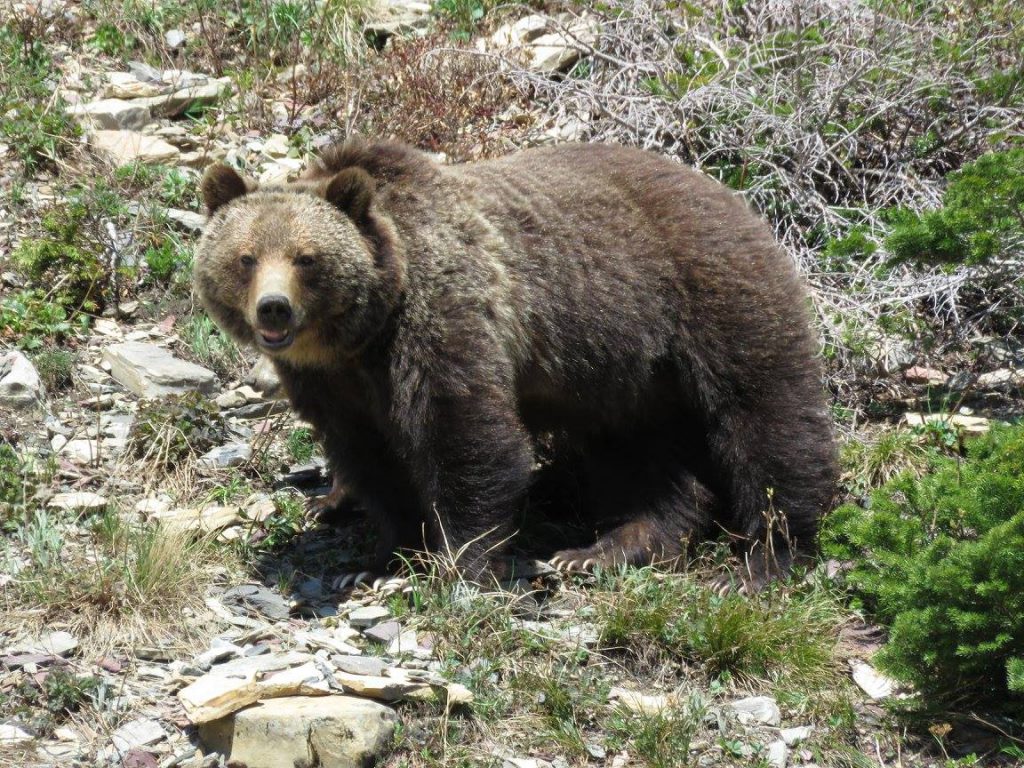
Wolverine
Wolverines thrive in mountainous regions with deep winter snowpack. That’s one of many reasons why ICL has a strategic campaign to eliminate sources of greenhouse gas emissions in Idaho.
Biologists have also learned that female wolverines avoid areas that are heavily used by snowmobilers and backcountry skiers. ICL is engaged in planning efforts throughout the state to strike a balance between winter recreation and protecting wolverine habitat.
ICL is also one of several conservation groups that petitioned the Fish and Wildlife Service to add wolverine to the endangered species list. Existing state management plans in Idaho, Montana, and Wyoming have proved insufficient to stop the decline of wolverine.
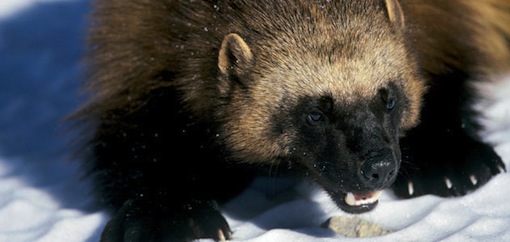
Sage-Grouse
Sage-grouse need large areas of healthy sagebrush habitat, but these places are rapidly disappearing due to wildfires, invasive species like cheatgrass, and development. ICL has a long history of working on sage-grouse conservation. We have worked with ranchers, sportsmen and women, bird watchers, government agencies, and energy companies to protect and restore habitat for sage-grouse and other species.

Bull Trout
Bull trout are an indicator of watershed health because they require cold, clean water for survival. Scientific models indicate that Idaho streams and rivers will be critical to the conservation of bull trout under climate change. By advocating for responsible land management practices and the protection of backcountry areas, ICL is helping to prevent bull trout from going extinct.
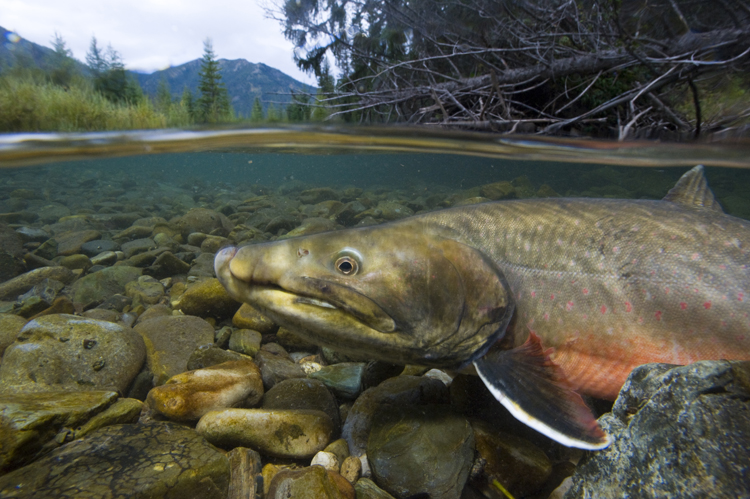
Bighorn Sheep
Bighorn sheep are an iconic part of Idaho’s natural heritage and are valued by wildlife enthusiasts, tourists, and sportsmen and women. These iconic animals roam the rugged terrain of the Middle Fork and Main Salmon Rivers, Hells Canyon, the White Clouds Wilderness, and the Owyhee Canyonlands. For many river runners and backpackers, spotting a herd of bighorn sheep perched high up on a canyon wall is the highlight of their trip.
